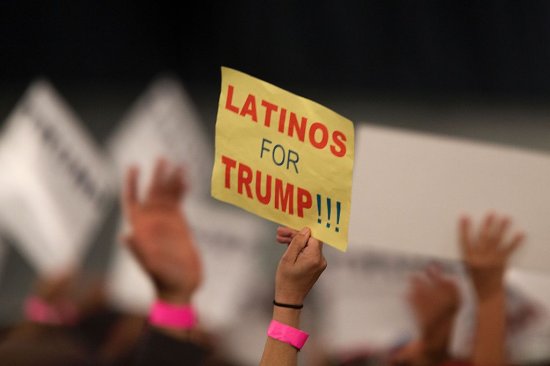
The party got too comfortable expecting immigrant support and failed to deliver a winning election pitch.
If the U.S. election taught us anything, it’s that Democrats are increasingly struggling to connect with immigrant and minority voters. Contrary to their claim that immigrants who vote Republican are simply “voting against their interest,” the reality is far more complex.
It’s true that immigrants generally hold more socially conservative views, but even those who don’t may feel uneasy about drastic structural changes. They left behind their homes, jobs, and lifelong friends to pursue a better future for them and their children. It was a calculated risk, a gamble they were willing to take. For many immigrants, voting for Donald Trump and the Republican Party represented a focus on issues like inflation, the economy, and education—priorities that, to many immigrant voters, seemed like the safer choice.
[time-brightcove not-tgx=”true”]In my view, Democrats haven’t fully grasped the idea that immigrants have conservative tendencies. The party instead relies on framing Republicans as racist or assuming immigration policy alone determines how immigrants vote. That came with disastrous consequences for them on Election Night.
Voting data shows significant shifts in areas with large immigrant populations. For example, in Allentown, PA, which has one of the largest Syrian communities in the U.S. and a Hispanic population of 54.3%, the Democratic margin dropped by 18 points from 2016 to 2024. Similar patterns appeared in Lawrence, MA (80% Latino), where Democratic support fell by double digits compared to 2020, and in Starr County, TX (97% Hispanic), where Republicans won for the first time since 1896.
Many Democrats were left asking: Why, despite the President-elect’s anti-immigrant rhetoric, would so many immigrants and Latinos vote Republican?
The answer is that immigrants and minorities, particularly working-class ones, are unhappy with the economy and much else. Whether they are from Mexico, Honduras, or Guatemala, if they are Christian, Muslim, or Hindu, many felt the Republican’s message of self-reliance, economic opportunity, and traditional values aligned more closely with their vision of the future.
That’s not to say immigrants don’t care about immigration. They do, in fact. A lot. It’s just that their views are often more nuanced than they are perceived.
Take the border issue, for example. The conventional wisdom is that immigrants—particularly Latino ones—would be put off by Trump’s border bluster. But an October New York Times/Siena College poll found that 67% of U.S.-born and 51% of foreign-born Latino respondents didn’t feel that Trump’s anti-immigrant rhetoric was directed at them.
Some immigrants also actively distance themselves from newly arrived migrants, seeking to assimilate as “true Americans.” They share concerns that unchecked immigration could stoke anti-immigrant sentiment, even if they think it won’t be directed at them, as the New York Times/Siena College poll suggests.
To add to that, the U.S. immigration system is convoluted and unfair. Many are on work visas who work high-paying jobs, pay taxes, and own homes, yet still lack a path to citizenship. Thousands more are stuck in years-long asylum cases, living in limbo and knowing a single decision could force them to leave at any moment. From this perspective, it’s no surprise that many view border crossings as “cutting the line.” Most immigrant voters either know the broken system firsthand or have loved ones navigating it.
Adding to these misconceptions is the tendency some Democrats have of labeling immigrants as “low-information” voters, pointing to language barriers and limited accessibility. While these barriers do exist—especially in rural areas—the truth is most immigrants make careful, informed choices.
Consider my parents. My father, a former civil engineer and real estate developer, and my mother, a former OB-GYN who ran her own practice, voted for the first time this year as newly naturalized citizens in Massachusetts. Despite limited English, they spent hours studying each amendment on the ballot—a commitment shaped by their experience in Syria, where such democratic processes are absent.
Both parties would do well to better understand voters like my parents. That will help them win over and speak to a growing part of the electorate. Today, one in 10 eligible U.S. voters are naturalized citizens—a 32% increase from 2012 to 2022, compared to just 8% growth among U.S.-born adults.
With so much at stake, it’s time for America to know the truth. Immigrants are largely not voting based on “vibes” or “identity politics.” For them, the ballot box is a practical tool to shape their future—one they intend to use thoughtfully. Hopefully one day soon, politicians will do a better job understanding them, and speaking to their concerns.
TIME Ideas hosts the world's leading voices, providing commentary on events in news, society, and culture. We welcome outside contributions. Opinions expressed do not necessarily reflect the views of TIME editors.